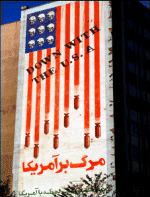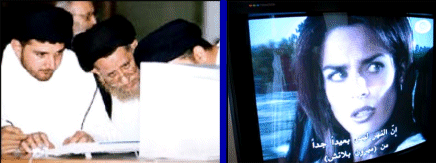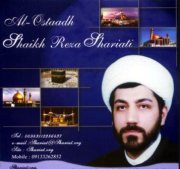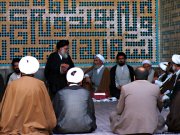Iran: An Axis
of Evil or Paradise?
 .
.
 |
.... |
Does
history repeat itself or not? In 1979 Iran stood up against the world,
which watched hopelessly for the next 25 years how any attempts at democracy
in the state ruled by ayatollahs and mullahs ended up with many Iranians
and others being killed, tortured, and jailed. That did not stop many allies
of the U.S. to continue profitable relations with the Iranian government,
benefiting profusely from the U.S. embargo against Iran. Is there anyone
who believes that this time is different? |

The
Middle East has been a major issue in international politics, especially
in the last few years. While Iraq is a country drawing the most of our
attention, the neighboring Iran is the power which can “make or break”
any future of democracy in Iraq and in the Middle East in general. Called
an “Axis of Evil” by the present U.S. administration, Iran seems to be
playing a dangerous game with the West threatening us with its nuclear
capabilities and increasing military prowess, all in the name of Allah.
Thus,
the common perception of this country is very negative in the U.S. as affirmed
continuously by official media and numerous governmental representatives.
However, the truth is not that simple.
This
presentation is designed to show “the other face” of Iran. It points out
that Iranian leaders, ayatollahs and mullahs, are not only politically
savvy and economically shrewd, but might become important partners in the
U.S. war on terrorism and eventually even an ally in this dangerous part
of the world. The pragmatism of mullahs and their adaptability to the ever-changing
reality created by wide-access to Internet and satellite TV allow the younger
generation to initiate democratic changes within Iranian theocracy.


Iranian
leaders are often portrayed in the media as “religious fanatics,” but in
reality many of them are very pragmatic and adaptable. Instead of arresting
millions of Internet and Satellite TV users (both officially “forbidden”),
mullahs are busy selling Internet lines and setting up cable TV systems
regulating them in the process.

Some
mullahs enjoy their secular power, especially when becoming a mullah is
a career move for otherwise destitute villagers. They are the ones who
order others around more frequently than those who attained their status
through deep religions studies and/or blood affiliation with Prophet Muhammad
(black turban).
 |
.... |
This
white-turban mullah is a typical “power” mullah who detests foreigners
and anyone whom he perceives to threaten his status. |
|
. |
|
 |
|
Al-Ostaadh
Shaikh Reza Shariati is a very well educated man who believes in dialogue
with the West, mutual understanding and existence in the atmosphere of
peace in the name of Islam. |
|
. |
|
 |
|
This
black-turban ayatollah meets with his followers everyday in one of numerous
madrasas (religious schools) of Eshafan discussing the holy message of
the Qur’an, not modern politics. |
|

